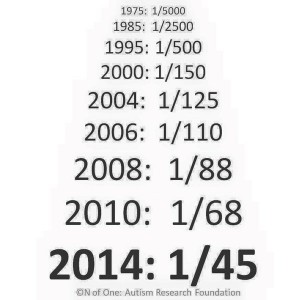
More, Special Education 
The Latest Number in Autism is 1 in 45: What Does It Mean?
In November, the National Health Interview Survey, an annual survey administered by the U.S. Census Bureau since 1957, published results stating that 1 in 45 American children between the ages of 3 and 17 have a form of Autism Spectrum Disorder (ASD). This new statistic immediately burst across the internet. The previous statistic, published by the Centers for Disease Control in 2014, estimated that 1 in 68 American children have autism. In 1999, autism prevalence was at 1 in 500. Autism prevalence statistics are generally considered controversial because of the methods for data collection, sample sizes and the changing diagnostic criteria for the condition. The emotional impact on families also comes into play: every time a new autism statistic is made public, reactions are strong. Here is a summary of insights and reactions around the web:The Alarmists
Perhaps the most vocal group are the people who cite the statistic to draw attention to the need for more autism treatments and research. Lisa Ackerman at Talk About Curing Autism wrote, “What does the number have to be for someone outside the autism community to care, activate and drive for answers?” On Twitter, @HeyShiftHappens wrote, “This should make you mad as hell! #1in45 #HearUs,” and included the below graphic that highlights the sharp rise in autism prevalence since 1975.



